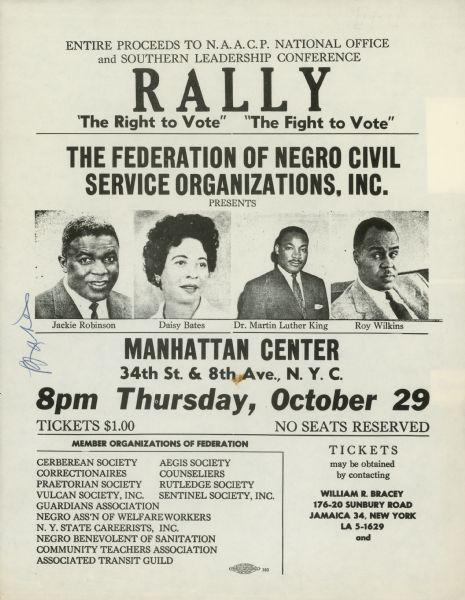Essay: Racial Inequality in the US

Essay Topic:
Write an argumentative essay in which you discuss the following question:
Has racial equality been achieved by African Americans in the U.S.?
Evaluate the extent to which this group has achieved racial equality. Use facts, statistics, quotations and/or examples to support your argument.
- Give your text an appropriate title.
- List the sources that you use.
- Your text should be approximately 600 words.

The Declaration of Independence, so treasured and emphasised by Americans, clearly states that "life, liberty and the pursuit of happiness" are fundamental rights who concern all people. However, African Americans have been fighting for decades to claim the most basic rights, such as the right to vote. Today African American people have equal rights as any other citizen in the US, and are judged by common laws. The United States of America is claimed to be a society with racial equality. Still, almost 50 years after the Civil Rights Act and the Voting Rights Act were passed, giving African Americans common rights, African Americans dominate the top at both the poverty and the incarceration charts. Today every person in the US enjoys common rights disregarding cultural, racial or religious background, but statistics proves that racial equality has still not been achieved for African Americans.
One of the most important statistics to consider is without doubt the unemployment rate. During the 1960s the black unemployment rate was as much as twice as high as for whites. More shockingly, this rate has been consistent. To this very day, despite their triumph in the fight for equal rights, the unemployment rate remains unchanged. As a direct result of this, in addition to other contributing factors, the average household income for blacks is half of the household income as for whites (again, this has remained consistent the last 50 years). These statistics prove that racial equality has not at all been achieved in the US. The statistics' consistencies show that equal rights have obviously not improved African Americans' position in society. One of the most alarming results of lower income and unemployment is that black children are far more likely to live in poor neighborhoods. People who live in poor neighborhoods often suffer from more health issues as well as learning difficulties. Based on this, children who grow up in poor surroundings will more likely be struggling to escape poverty later in life. Poverty is proven to be heritable, it is therefore possible that many African Americans are still trying to escape the poverty their families were trapped in before equal rights were granted. If racial equality is to be achieved, American society clearly, based on these statistics, has to do more than grant equal rights.
At the end of 1960 the black poverty rate dropped to 32.2% from 55.1% in 1959. After 1960 the African American poverty rate continued to drop for a few years. However, the decrease was considerably less and more uneven. The last couple of years the rate has been consistent, and is yet another proof of racial inequality in the US. Today the black poverty rate is almost three times as high as for whites. The drop of the rate for African Americans after 1960 cannot be considered as a result of increased racial equality, because the rates for other racial groups have experienced an equal decrease.
The United States is known as the "incarceration nation" due to the fact that 790 per 100,000 citizens are incarcerated, this is almost 800 times more than comparable countries. The US has 2. 3 million prisoners, nearly 1 million are African Americans. The high number of incarcerated African Americans is undoubtedly a result of the low income and high unemployment among this group. African Americans do not only represent a high number of incarcerated compared to whites, the percentage of African Americans incarcerated is in fact higher than in the 1960s. Again, this is a clear indicator of the delusion that the United States has achieved racial equality.
When trying to figure out the reason for the African American's representation at the top of charts such as unemployment, school dropout, incarceration and poverty on bad statistics will be the answer of another. It is hard to figure out the underlying cause of the racial differences. The only answer, built on statistical facts, is that the United States of America has not yet managed racial equality, despite equal rights.
Source:
http://www.washingtonpost.com/blogs/wonkblog/wp/2013/08/28/these-seven-charts-show-the-black-white-economic-gap-hasnt-
budged-in-50-years/ (localized on the Internet 14.10.2013)
Annotated Essay: Racial Inequality